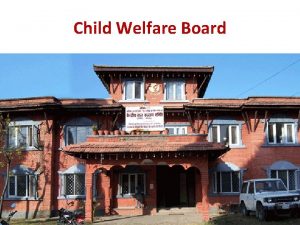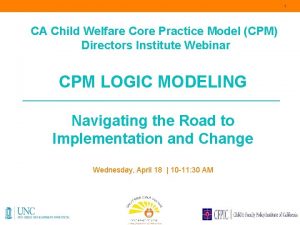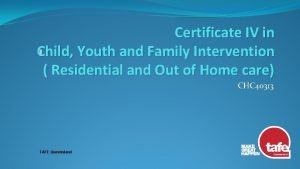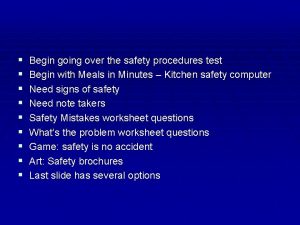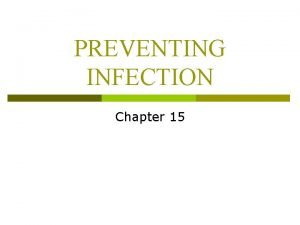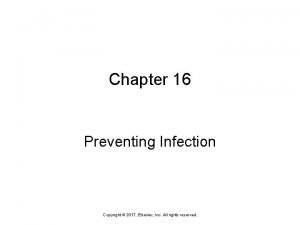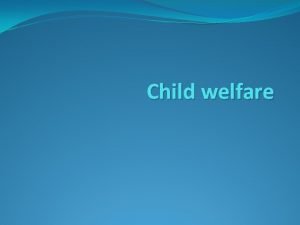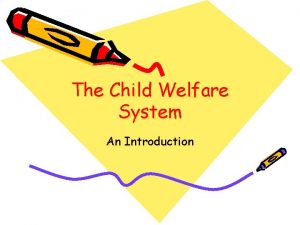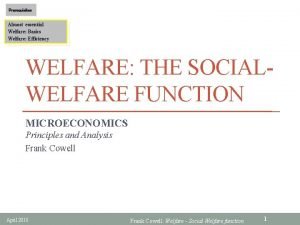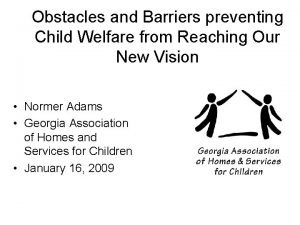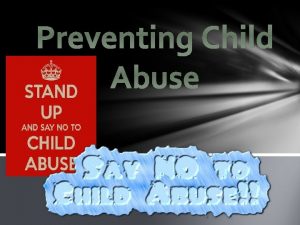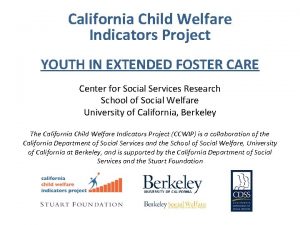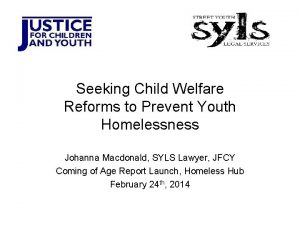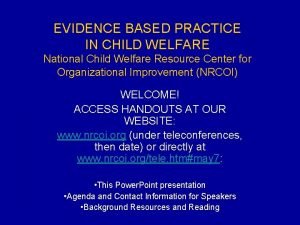MISSED OPPORTUNITIES Preventing youth in the child welfare






















- Slides: 22

MISSED OPPORTUNITIES Preventing youth in the child welfare system from entering the juvenile justice system

Overview of Presentation Why Cf. JJ did a report about child welfare Which kids were in our study Findings of the study Recommendations Next steps

Why did Cf. JJ do this Project?

JJ System Involvement Harms Kids Most kids have low-level offenses JJ involvement increases negative outcomes: drop-out, recidivism, etc. 30% of kids in MA are detained � Detention = shackling, stripsearching, missed school Interferes with activities that promote healthy youth development (sports, clubs, family therapy if needed) Stigmatizes and saddles kids with a record at most critical developmental stage

Prevention and Diversion are Critical MA is prosecuting more kids for lower level crimes than we used to – harmful to kids, expensive & ineffective Most teens engage in behavior that is chargeable – few are arrested or charged Kids of color, with disabilities, & in child welfare disproportionately charged, detained & committed

Prevention and Diversion are Critical Prevention and diversion can: Reduce stark disparities and unfairness of system Avoid harm to kids caused by JJ system Reduce recidivism and promote public safety Ensure resources are spent on things kids & families need most (housing, healthcare, education, therapeutic services, community programs, etc. )

CW Kids in the MA JJ System 2000 Cf. JJ Study Found 54% of CHINS youth arraigned within 2 years JDAI: overall reductions in detention, but increasing % have currently open case with DCF � DCF youth experienced longer stays in detention � DYS begins to track group, including immediate prior placement 2012: 30% of boys, 60% of girls in DYS Detention had open DCF case

% of kids who had DCF involvement DCF kids detained or committed

What did Cf. JJ research? Wanted to understand what happened to kids before they arrived at DYS Used group of kids identified through JDAI efforts � ~ 1500 youth dually-involved with DCF & DYS in 2014 � Also looked at research on committed kids (2000 -2012) Not representative of whole multisystem population: � Juvenile Court & CPCS not tracking dually-involved kids � More youth of color and boys in detention population Looked primarily at intake, placement history Recognize further research needed

Findings

Overview of Findings

Gender and Race/Ethnicity Boys and youth of color were overrepresented in the dualstatus population as compared to the overall child welfare population.

Early Involvement with DCF Over half of dual-status youth had come to the attention of DCF by the time they were five.

Lifetime Home Removals 54% of Boys and 77% of Girls had experienced a “Home Removal Episode. ” Many had more than one.

Lifetime Placement History Of youth who had spent time in placement, most had three or more lifetime placements.

Placement Prior to DYS Entry

BA R N BE STA R BL KS E H B FR R IRE IS AN TO KL ES L H IN A S /H M EX AM PD M PS EN ID H D IR L E N ES O E PL RF X YM OL O K W SU UT O FF H R O St CE LK at S e TE Av R er ag e Placement Prior to DYS Entry 180 160 140 120 100 80 60 40 20 0 (No Data) Other Residential Program STARR Program Foster Home

Recommendations

Recommendations Focus on normative developmental experiences for youth, Positive Youth Development framework Improve identification, assessment, and support for families at risk of system re-entry Address high levels of placement disruption for youth in out of home placement � � Adopt evidence-based practices to prevent disruption Adopt policies that require immediate, comprehensive response to potential or actual

Recommendations Judges and counsel should actively engage in case planning and should be immediately notified of any placement disruption STARR Programs should be evaluated to determine if they are working as intended Any program or home with high numbers of youth being arrested or entering DYS should be evaluated

Recommendations DCF involved youth should be diverted from court processing – prior to arraignment – whenever possible � Reducing sufficient use of detention or length of stay is not Aggregate data sharing systems must be developed to allow us to evaluate how children are travelling through systems, what their needs are, and how they are doing, and to hold systems accountable for how we serve kids and families

For additional information… Kate Lowenstein, Project Director kate. lowenstein@cfjj. org 617 -338 -1050 http: //www. cfjj. org/missedopportunities. ph p
 Vr3 child welfare foundation
Vr3 child welfare foundation National policy and legislation
National policy and legislation Central child welfare board
Central child welfare board Core practice model
Core practice model Agency related to child welfare
Agency related to child welfare Ohio child welfare training program
Ohio child welfare training program National agencies for child welfare
National agencies for child welfare Child welfare
Child welfare National program list
National program list Child welfare services
Child welfare services Child youth and family services act
Child youth and family services act Rpl tafe qld
Rpl tafe qld Chapter 13:2 preventing accidents and injuries
Chapter 13:2 preventing accidents and injuries Chapter 24 lesson 2 preventing and treating stds
Chapter 24 lesson 2 preventing and treating stds Workers compensation puncture
Workers compensation puncture Preventing kitchen accidents worksheet
Preventing kitchen accidents worksheet Chapter 4 preventing injuries through fitness
Chapter 4 preventing injuries through fitness Chapter 9 lesson 2 resolving conflicts
Chapter 9 lesson 2 resolving conflicts Preventing ageing unequally
Preventing ageing unequally Robert vischer empathy theory
Robert vischer empathy theory Chapter 15 preventing infection
Chapter 15 preventing infection Chapter 16 preventing infection
Chapter 16 preventing infection Chapter 20 preventing kitchen accidents
Chapter 20 preventing kitchen accidents


